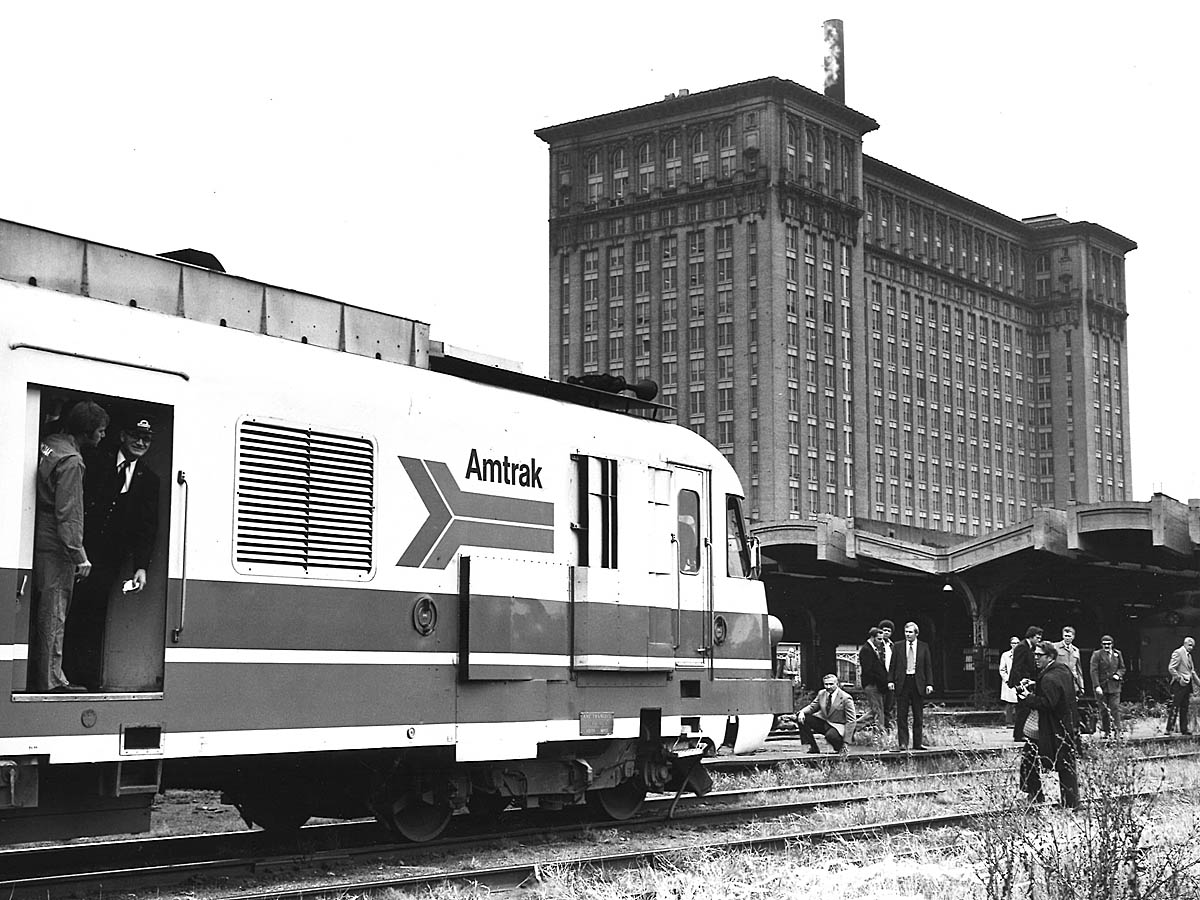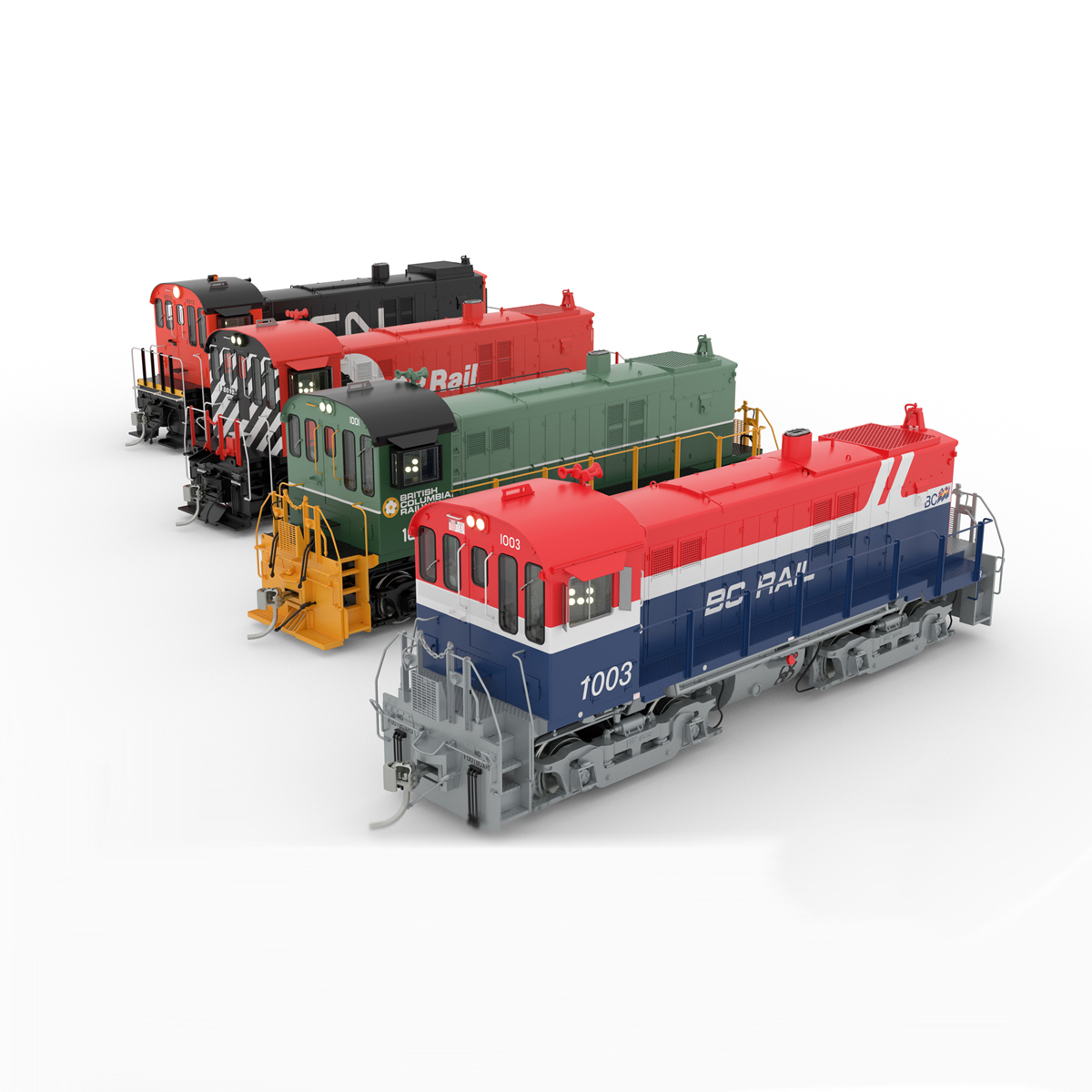Get a weekly roundup of the industry news you need.
DETROIT – Confirming recent rumors, Ford Motor Co. has purchased the neglected Michigan Central Station in Detroit for an undisclosed price,
The Detroit News reports Monday. The company will share additional details for its plans in the Corktown neighborhood, located just west of downtown, on June 19, according to a spokesman quoted in the report.
The Moroun family, which has owned the station since the 1990s, was ordered by the city council to tear it down in 2009, but that work never came to pass.
Also included in the deal is an adjacent building known as the Roosevelt Warehouse, once used as a schoolbook depository.
Trains News Wire will provide more information on this developing story as it becomes available.















Charles: The Ford’s do not purchase properties for PR alone the previous owner sat on the site so long that they let the building decay. The Ford’s see value in the site even if it has to torn down, I am a Detroiter and the current owner let the eyesore stand and never made any moves to improve or demo the site. I wish the Ford’s and Ford Company the best with project! Full disclosure I am a Ford Company shareholder.
I don’t read anywhere in this article saying the building will be saved, Their plans for the neighborhood may include demolition.
Ford is diving in deep with electric and self driving vehicles. This is where their “future tech” will be Hq’d along with several surrounding city blocks in ‘ Corktown’. Wait for gents. It gives them huge PR/image benefits along with a corp. design center. Payback should be huge long term.
GEORGE: (1) Historic building can’t be torn down. (2) Demolition costs would be far more $$$ then the land is worth (3) Detroit news http://www.detroitnews.com (4) Detroit Free Press http://www.freep.com
Kudos to Ford. Where practical, this is what we should be doing–reusing, repurposing, restoring–instead of new construction. It is a bonus that it is a historic railroad structure.
What would it take to satisfy you, Charles Landey? Demolishing the building and leaving a weed and garbage strewn vacant lot until the end of time? Would that make you happy? When Ford finishes restoring it are you going to picket out in front and demand that it be returned to its trashed state?
And lacking modern materials & design? You mean flimsy drywall, fake bricks and post-modern kitsch?
Neglected, the article says? Neglected? My god, this is America’s worst high-rise slum. Bottomless money pit. May be an architectural gem (in most peoples’ eyes, not mine) but its 1913 construction predates anything resembling modern materials and design. This building was past its prime by World War II, badly deteriorated by the 1970’s, and hopelessly derelict by the 1990’s. If I were on FoMoCo’s Board of Directors I’d say thumbs down. But apparently Ford thinks it can print money.
PEOPLE: In my prior posts I shouldn’t have implied that buildings become obsolete as fast as cars do. Surely, older buildings can be rehabbed – to a point. A building as large as Michigan Central and as derelict as Michigan Central and as old as Michigan Central does raise serious questions. Railroads in America and elsewhere are stuck with old terminal buildings they need to pour money into. But not ones that have been allowed to rot away unused, unheated, unwaterproofed over the decades. Also I might point out that FoMoCo isn’t a railroad and has no business with this building. FoMoCo is a car company in a cutthroat competitive business where every dollar (or any other unit of effort, like the time or the thoughts of management) must be made to count. The other companies I’ve done business with (besides having owned two 1999 Fords) are (the former) Chrysler and Subaru. I’m quite sure that neither one of them is in the business of bringing an oversized dump of a derelict white elephant back from the dead. They have other uses for their dollars (or euros or yen or whatever) and other uses for management time.
As long as they don’t use federal tax dollars they can do what they want as far as I’m concerned.
Boston’s South Station was opened in 1899. Grand Central Terminal = 1903. Washington Union = 1908. Worcester Union = 1911. Denver Union = 1914. Kansas City Union = 1914. Chicago Union = 1925. Springfield (MA) Union = 1926. Los Angeles Union = 1939.
All of these large stations have been restored and now are economic engines for their respective cities. Would you prefer they all be torn down? Just because they are old? They are not cars, they are buildings. A 20 year old car is an antique; a 20 year old building is still new.
Before Ford emailed the invitations this morning to its announcement party next week, I’d hazard a guess that it actually evaluated the depot and determined it could be brought up to modern codes. The 1924-built Book Cadillac Hotel in Detroit was an abandoned wreck for 22 years before it was renovated into a Westin. These old buildings were built solidly.
The structure is a Detroit icon that has been a example of urban decay for decades. I commend Ford for taking this action and look forward to seeing the structure reborn.
Paul Harrison – I hear tell that the Europeans even use electricity from overhead lines to power some of their trains even! I wonder where that came from?
STEVE BURNS – Actually yes there is a shocking amount of wood in that building. You know, the world has changed since 1910. Passenger trains have retention toilets. Diesel exhaust is regulated. Our condo has sprinklers. Rail workers use PPE and fall protection, like the workers who load tank cars. My wife’s car has lane departure warning, and both our cars have multiple airbags. And no one builds buildings like Michigan Central eleven decades ago. ARTHUR – I glad you buy Fords. My wife and I have had one each and we thought they were awesome cars, for their day, which was long ago. However, ARTHUR, my best guess is, you don’t drive a Model T. I would consider our own Fords (long since traded in) hopelessly obsolete. They were 1999 models. Let alone 1910.
I’m very happy to see this. As a Ford owner, I hope Ford does a complete restoration while repurposing the building. I arrived in this building for the first time in 1955 as a 3 year old aboard the NYC Mercury and returned 24 years later on the Amtrak Lake Cities Turboliner. I hope the Ford restoration is as successful and architecturally tasteful as the Fox Theatre in Detroit. I will do my part to support this by continuing to buy Ford vehicles.
Seems to have survived the spark-heavy steam era pretty well without catching fire.
Isn’t it made up of bricks? I wasn’t aware it was a wooden building, if Charles is right and it’s actually made of wood and paper all glued together with candle wax and waterproofed with Vaseline, then it’s pretty impressive, I don’t think I’ve seen a wooden building that high.
I swear a trip to Europe would make most of Train.com’s readers (and probably writers too) heads explode. You mean there are buildings there over FIFTY YEARS OLD?! And the entire continent is served by trains with hardly any of them being sleeper trains that stop at obscure villages at three in the morning? No! It cannot be! Such things are impossible I tell you, impossible! Next you’ll be telling us that 125mph DMUs are a thing!
Steve Burns – I mean fire-resistant construction and a structure amenable to upgraded safety standards. As for alternatives – demolition etc., or what else to do with a substandard building. Steve I don’t have the answer to that question. I have no clue what to do with that obsolete building. But if I were a FoMoCo stockholder, I’d say, NOT MY PROBLEM. Michael Fisher – You have a point, repurposing rather than new construction. The health and safety of the building’s occupants comes first.